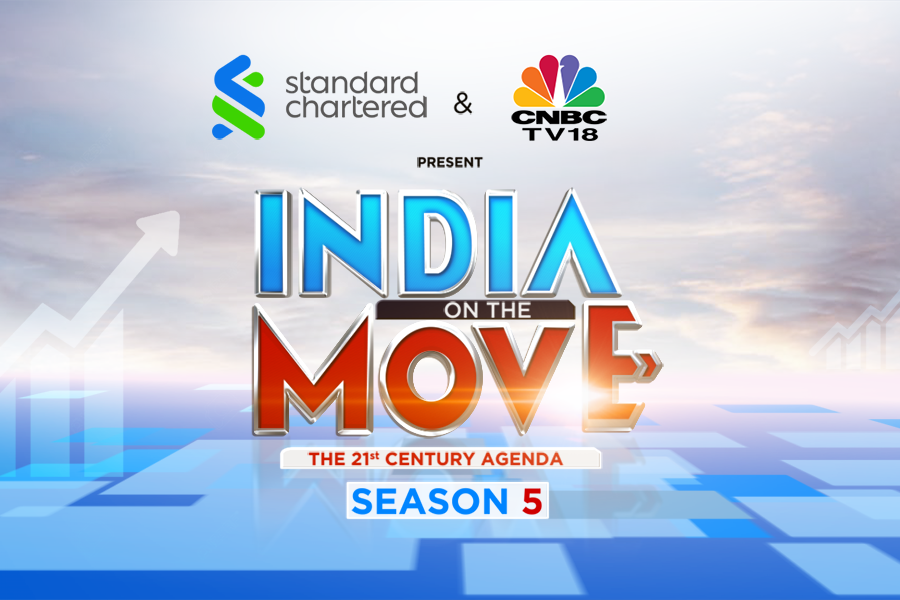
Decoding India's macroeconomic growth outlook
Industry experts deliberate the road ahead on India's economic growth story

A consumer awareness initiative by Standard Chartered Bank in association with CNBC-TV18 under the India on the Move series (Season 5), telecast on Tuesday, 24th August.
Viewing India’s growth story from a macroeconomic lens, Mridu Bhandari interacts with a diverse industry panel comprising Jeremy Zook, Director, Asia Sovereign Ratings, Fitch Ratings, Karthik Srinivasan, Senior Vice-President, Group Head, Financial Sector Ratings, ICRA, and Anubhuti Sahay, Head – South Asia, Economic Research at Standard Chartered Bank.
Commenting on the revision of India’s BBB- rating, Jeremy explained the pandemic-led fiscal pressures and uncertainty around the medium-term debt trajectory were the primary causes. Talking about the growth outlook, he said the GDP levels by the fiscal year 2026 shall be 8% lower than what they forecasted previously. He foresees India’s next year’s growth rate at 8.5%, and thereon an average of 7% until the fiscal year 2026.
Further commenting on the GDP growth, Anubhuti shared that the financial year 2022 forecast is at 8.5% and it builds in another round of increase in inflation in the rest of 2022, but does not account for the third wave. She cautions that in case we are hit by the 3rd wave of COVID-19, the GDP shall be at a risk. On the brighter side, she added, “Sensitivity of economic activity to successive waves is reducing gradually. Though we do see an adverse impact on growth recovery, recovery can be delayed and not derailed”.
Shedding light on the lending and credit side, Karthik explained that the onset of COVID-19 has only amplified the existing woes of the banking industry. A relook at the past few years shows that due to the challenges on capital and increasing risk averseness among lenders, credit growth has slowed down to a single digit in the last two years, this has further been compounded due to low-capacity utilization and other ground-level concerns faced by the corporate sector. Commenting on the future outlook he said, “We expect that the credit growth would continue to remain in single digit in FY 2022, our estimate is close to 7-8% for this year. If the economy shows signs of recovery in the 2nd half, then we can see a growth of 9-10% or higher in the next financial year”.




